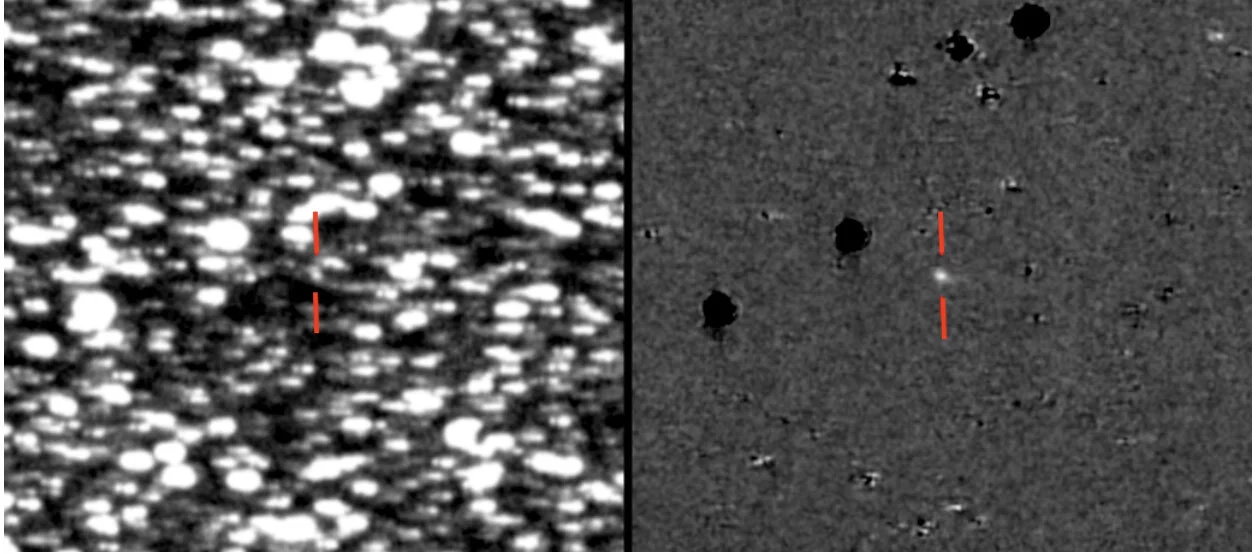Scientists using the University of Hawaii‘s Asteroid Terrestrial-impact Last Alert System (ATLAS) telescope have discovered an asteroid that shows the property of a comet. Designated 2019 LD2, the Trojan asteroid shares the same orbit as Jupiter, yet exhibits a tail like a comet.
As researchers learn more about the solar system, what once seemed like neatly defined categories have been breaking down. Previously, asteroids and comets were regarded as being as distinct as cosmic apples and oranges. Asteroids were rocky or metallic bodies that ran in more or less circular orbits around the Sun, mainly in the asteroid belt between the orbits of Jupiter and Mars, while comets were balls of dirty ice that generally ran in highly elliptical orbits.
Of course, there are exceptions, like the Trojan asteroids that share the same orbit with another planet, trailing about 60 degrees ahead or behind the planet in a position so stable that the asteroids can stay in place for billions of years. Now, one of them is acting like a comet.

Found in June 2019 and studied by Alan Fitzsimmons and David Young at Queen’s University Belfast, and University of Hawaii astronomers J.D. Armstrong and Sidney Moss while it remained visible from Earth, 2019 LD2 is a Jupiter Trojan asteroid, meaning it is one of hundreds of thousands of other asteroids leading or trailing Jupiter.
However, 2019 LD2 turned out to be special in that over the year that it was observed, it was spewing out a tail of dust and gas like a comet – something no Jupiter Trojan had ever been observed doing. This is a problem because comets come from the Kuiper Belt or the Oort Cloud, where they have sat since the formation of the solar system before having their orbits disturbed, sending them sunward. By contrast, 2019 LD2 was probably captured billions of years ago and isn't a recent visitor like a comet, so it shouldn't have a tail because any ice present should be long gone.
According to the researchers, the answer may be that 2019 LD2 may have suffered a mishap. Trojan asteroids have been suspected of having icy interiors that are insulated by a dusty, rocky surface. What may have happened is that 2019 LD2 suffered an impact or a landslide, exposing the ice, which is boiling away as the sunlight shines on it. Alternatively, 2019 LD2 may have only recently been captured by Jupiter from a more distant orbit where ice could still survive on its surface.
"Even though the ATLAS system is designed to search for dangerous asteroids, ATLAS sees other rare phenomena in our solar system and beyond while scanning the sky," says ATLAS project principal investigator Larry Denneau. "It’s a real bonus for ATLAS to make these kinds of discoveries."
Source: NASA





